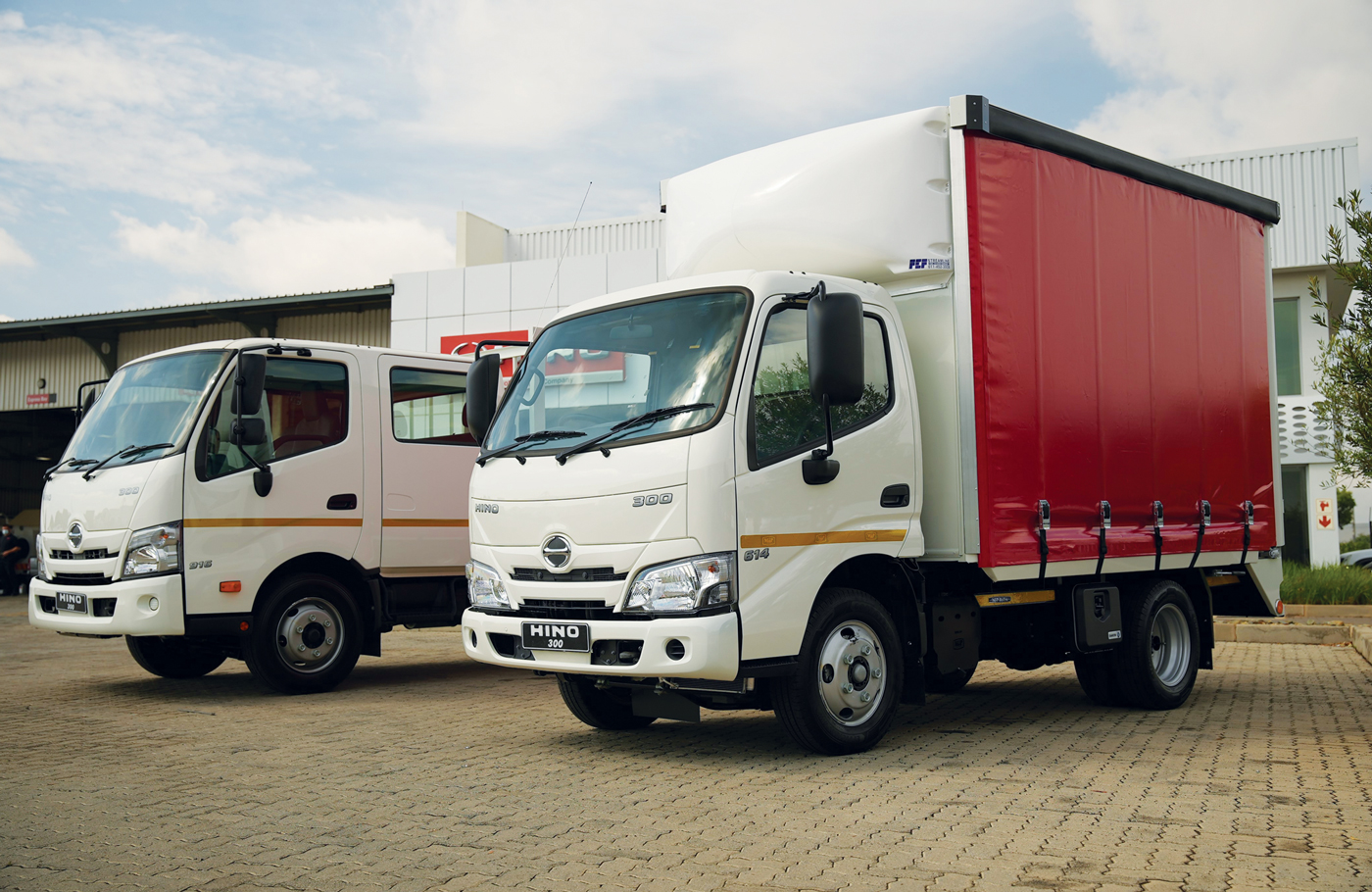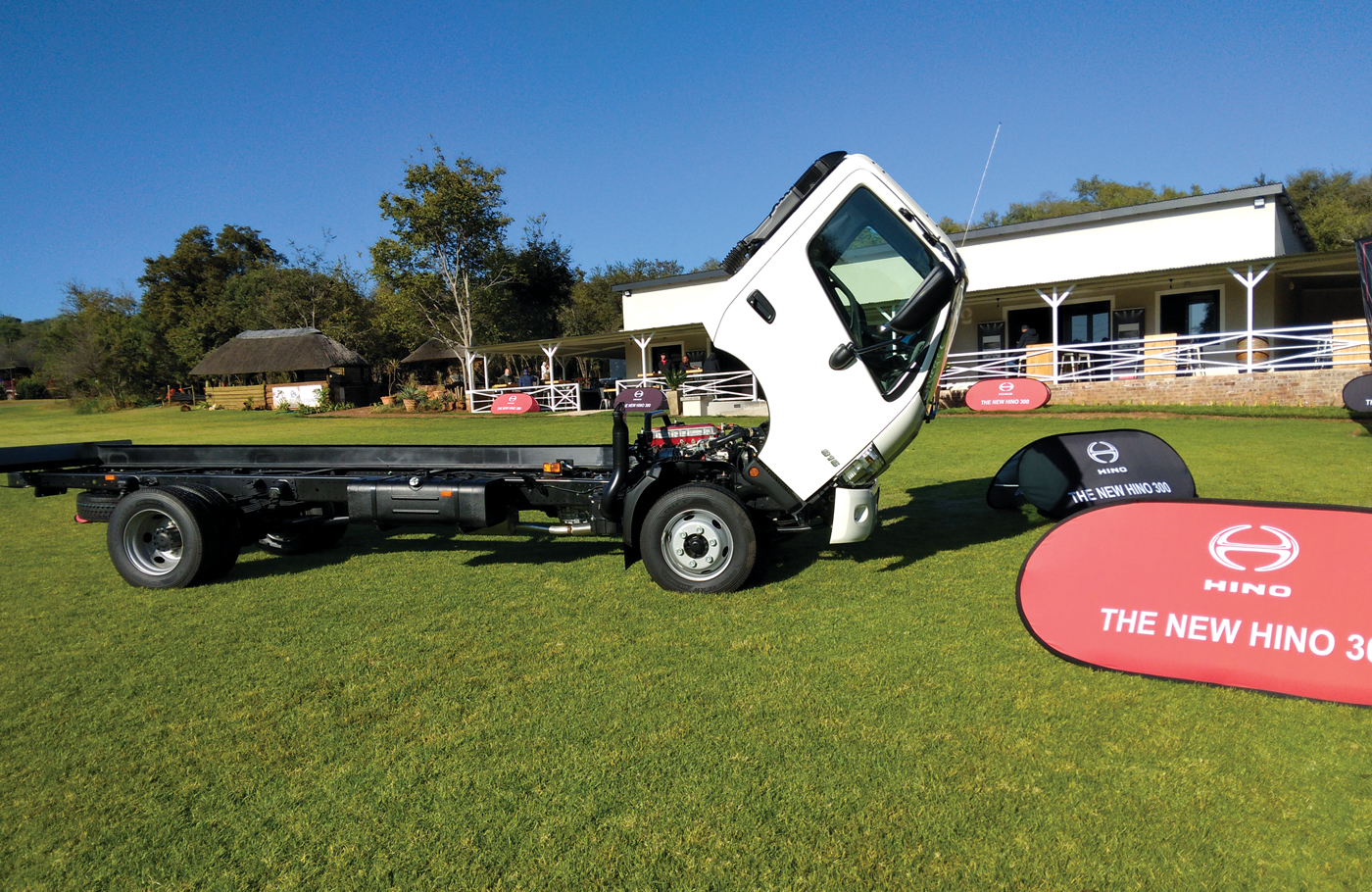New Hino 300-Series: complete transport solution for the medium truck market
New Hino 300-Series: complete transport solution for the medium truck market
Hino South Africa has introduced its revised 300-Series truck range, with cosmetic changes, added features and a realigned model mix.
At the launch, Masaaki Yamamoto, chief engineer of medium commercial vehicles at Hino, explained that, in designing the revised truck range, the designers and engineers focused on four key elements. “We wanted to achieve an easy drive, enhancement of the line-up, improved fuel efficiency and easy body mounting. I believe that we have achieved this with the new trucks – and we have also produced trucks that are easy to operate, extremely comfortable and very driveable (regardless of driver skills). We believe this will also help customers who have difficulties in securing skilled drivers,” he pointed out.
300-Series models have been amongst the local medium truck market leaders for many years and are key players in a wide variety of applications. “We are incredibly pleased to launch this updated and revised Hino 300-Series range. We believe we now offer a complete transport solution in the medium truck market segment,” enthuses Ernie Trautmann, Vice President of Hino SA.
The comprehensive, competitively priced range offers 13 derivatives with body and payload capability of 3 390 to 5 950 kg. Powered by a four-cylinder, 4-litre turbocharged diesel engine, smaller models use a lower output (136 hp/100 kW of power; 392 Nm of torque) form, while higher-GVM models use an output of 150 hp/110 kW and 420 Nm.
The six-speed, fully automatic transmission has been extended across the range, with the availability of automatic transmission on 8,5-tonne GVM 916 models in particular welcomed by many operators.
With wheelbase lengths ranging from 2,525m to 4,2m, the 300-Series offers a variety of model configurations. Both the 5,5-tonne GVM 614 and 6,5-tonne GVM 714 models have short-wheelbase (SWB) and long-wheelbase (LWB) manual transmission derivatives, along with SWB automatics. The 7,5-tonne GVM 816 models are both SWB and like the LWB 916 models, have either automatic or six-speed manual transmissions.
The range is rounded off with three LWB crew cab models: the 714, 816 and 916, all with the well-proven, fuel-efficient six-speed automatic transmission.




The transmissions boast a new torque power cut feature on first and second gear, protecting clutch, transmission and the whole drivetrain, while the ‘intelligent’ Hino automatic has a fuel-saving torque converter lock-up in five ratios – from second to sixth gear – which has been extended to the 714 Crew Cab, 916 LWB and 916 Crew Cab models. There are new manual gearboxes too, with some models getting fuel-saving six-speed units and others retaining a newly revised and optimised five-speed model.
Fuel consumption ranges from approximately 4,8 km/litre in cities to 5,5 to 6 km/litre on the highway with a full 3,6-tonne payload. This has also been confirmed in independent tests conducted by Gerotek. With the new range an improvement 2 to 3% can be expected. The 916 (manual transmission and automatic) models’ fuel tank, meanwhile, has been increased from 100 to 150 litres.
A new fuel pump deals with higher pressures, allowing improved positive pressure fuel filters to increase common rail pressure at the injectors and optimise fuel combustion, reducing emissions. New water-detecting and clog sensors warn drivers of filter issues.
Externally, daytime running lights – which turn on automatically with the ignition – and revised front grille panels have been added; Narrow Cabs boast new headlamps and front bumper. Inside the cab, a revised instrument panel contains larger, easier-to-read speedometers and tachometers, hands-free Bluetooth radios, and an average km/litre indicator, allowing drivers to monitor their own fuel consumption.
The 300-Series also now boasts a similar chassis to the 500-Series, with pre-manufactured holes enabling bodybuilders to mount various components in different positions without drilling new holes and potentially compromising chassis integrity.
Hino-Connect – a full fleet-management telematics solution – allows fleet managers to track driver behaviour by logging exceptions like harsh braking and acceleration, among a host of other features. “This is now standard on all Hino trucks,” Trautmann notes.
Published by
Focus on Transport
focusmagsa




